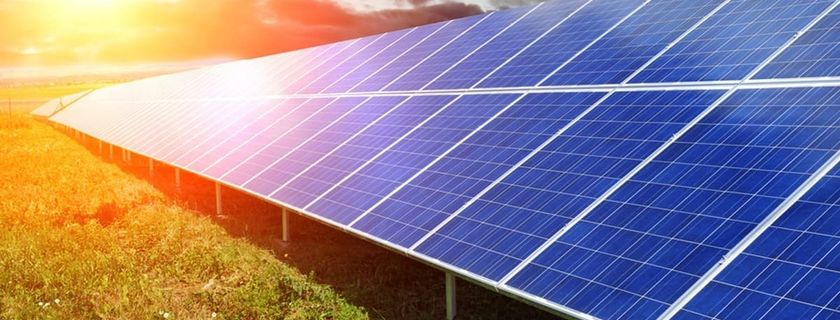The unprecedented growth of photovoltaic (PV) deployment (from about 200 GW of global installed capacity by 2015 to 4500 GW expected by 2050) (IRENA, 2016) raises the question of what is to be done with increasing levels of photovoltaic module waste at end of life (EOL). Mature panels are not the only issue, though. It has been shown that many PV installations are replaced before the end of their theoretical lifetime to take advantage of higher efficiency yields resulting from technological improvements.
A similar situation is foreseen for lithium-ion batteries (LIBs) from electric vehicles, which, at the end of their automotive life, can serve as stationary energy storage units for renewable energy sources. Just as with PV panels, waste projections for decommissioned EV batteries are alarmingly high for the next decade.
CIRCUSOL
One of the strategies being investigated by the CIRCUSOL consortium concerns the refurbishment of decommissioned, failed or degraded PV modules for their recommissioning as second-life products. It is estimated that up to 80% of the PV waste stream will consist of product defects caused during production and transportation, or of infant failures taking place over the first four years of the panels’ operational life, instead of products that have reached the end of their designed technical life. In a recent publication, IMEC, one of CIRCUSOL's partners, estimated that about 45%‐65% of the retired PV modules can be repaired/refurbished and commercialized as 2nd life panels.
A second important strategy promoted by CIRCUSOL aims at removing the barriers for the use of second-life EV batteries as renewable energy storage units. To achieve this goal, consortium partners are working towards improving the batteries remanufacturing technologies at the cell level and developing labelling and certification protocols to boost market confidence.
Using a system dynamics simulation model for scenario and policy analysis
The Bern University of Applied Sciences, with the support of its institute on Industrial Engineering and Management, will develop a mathematical model to identify the dynamics created by the material/information flows in the different stages of the PV and LIBs life cycle, including manufacturing, inventory, transportation, installation, business models for 1st and 2nd life use, collection, and recycling.
The simulation model, based on the system dynamics methodology, is aimed at scenario and policy analysis and will account for legal, social, technical, environmental, and economic drivers and barriers of circular economic business models. It is estimated the model will be capable of evaluating the long-term (i.e., 25-40 years) impact of policy interventions on relevant circular economy KPIs.

Fig 1: Analyzing the dynamics involved in the diffusion of 2nd life PVs and LIBs requires modelling the interrelationships of different variables in key system sub-sectors (e.g., technical, environmental, social, economic and legal)
Because the ecosystem in which panel reuse and battery repurposing takes place is a complex one, a tool which can help decision-makers effectively deal with the unexpected consequences of non-linear behaviours, accumulations, delayed cause and effect relationships, as well as information feedback is needed.
Computer simulation can, for instance, assist decision-makers in assessing the PV/battery ecosystem from a business/customer perspective, as well as from a broader economic perspective. Depending on the business model, the former could investigate the dynamics of market adoption, financing methods or business profitability, whereas the latter could look at the substitution effect of primary vs secondary production, material and product prices and the rebound effect.
Group sessions and individual interviews with selected project stakeholders, together with reviews of academic literature, will serve as the main input for the conceptualization and validation of the simulation model.
What is system dynamics (SD)?
System dynamics is a computer simulation methodology, consisting of an interlocking set of differential and algebraic equations, aimed at enhancing the understanding of complex feedback systems while simultaneously helping decision-makers design more sound policies. SD looks at interrelationships rather than events and focuses on patterns of change over time rather than static snapshots at a certain point in time.
Notation-wise, SD makes use of stocks, flows, and parameters to model the complex behaviours of different systems. Overall, the stocks will integrate the difference between the inflows and the outflows (increasing when the inflow is greater than the outflow, decreasing when the opposite happens and remaining in equilibrium when both inflow and outflow are equal), while the flows will be functions of the stock and other parameters. Finally, parameters are numerical values that remain constant throughout the simulation and that affect other variables and flows in the model.

Fig 2: A simple stock (PV installed capacity) with an inflow (PV installation rate) and an outflow (PV decommissioning rate). The outflow rate features a 3rd order delay to reflect the s-shaped curve of the Weibull probability distribution for PV panels throughout their lifetimes.
About the Institute of Industrial Engineering and Management
At the Institute, the researchers deal with the development of management methods and tools for the analysis, modelling, simulation, and validation of business ecosystems. Besides CIRCUSOL, another relevant project from the research group include:
· ProsumerLab, which looks at the dynamics of prosumers, the meaning of users who not only consume energy but also produce it. Results from this project show that the increasing share of photovoltaic and battery storage systems will decrease the household Swiss national electricity demand from the grid by 9% in 2050. Furthermore, it shows that the increase in electric vehicles (EV) potentially increases the household electricity demand from the grid by 8% in 2050.
Relevant publications from the Institute group members include:
· Franco, M. A. (2019). "A system dynamics approach to product design and business model strategies for the circular economy." Journal of Cleaner Production 241: 118327
· Franco, M. A. (2017). "Circular economy at the micro level: A dynamic view of incumbents’ struggles and challenges in the textile industry." Journal of Cleaner Production 168: 833-845.
· Franco, M. A. (2018). Buyer‐supplier collaboration for innovation in the circular economy: A network perspective. Forthcoming chapter in the book “Sustainable Innovations”, Routledge Taylor & Francis Group.
· Schaffernicht, M. F. G. and Groesser, S. (2018). Growth Dynamics in New Markets: Improving Decision Making through Model-Based Management, Wiley
· Schwaninger, M. and Groesser, S. (2008), System dynamics as model‐based theory building. Syst. Res., 25: 447-465
References
IRENA. End-of-life management: Solar photovoltaic panels International Renewable Energy Agency; 2016 [Available from
http://www.irena.org/DocumentDownloads/Publications/IRENA_IEAPVPS_End-of-Life_Solar_PV_Panels_2016.pdf]
AUTOR: Circular Economy Specialist MARIA FRANCO, LinkedIn profile


